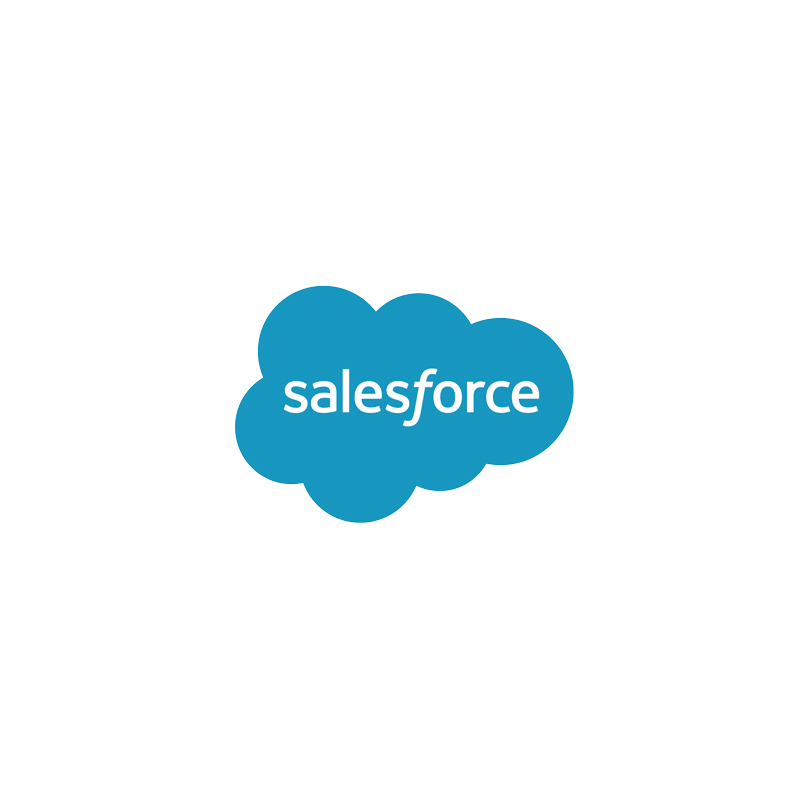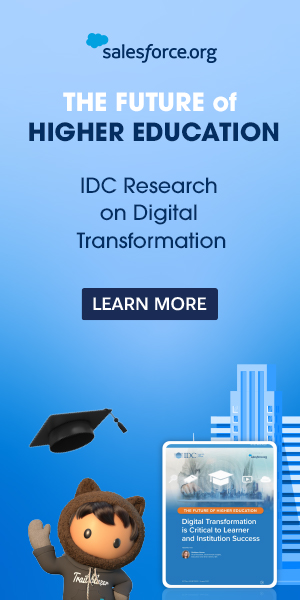
The next era of technology in higher education is intrinsically linked to student success
In his keynote presentation at a Times Higher Education and Salesforce.org student success event, Andy McGregor, director of edtech at Jisc, quoted Donald Rumsfeld. The former US secretary of defense’s famous “known knowns”, “known unknowns” and “unknown unknowns” describe where higher education finds itself at the dawn of the fourth industrial revolution.
He then explored what the next two decades of technological advancement might look like for higher education. Mr Rumsfeld’s quote drew a laugh, but how the sector acts upon its “known knowns” and prepares for its “unknown unknowns” will go a long way in determining how successful it is in harnessing technology to deliver student success.
It will not be easy. The student success survey by THE and Salesforce.org found that more than 75 per cent of academic and management university staff could not identify a technology road map. “I expect, if you go more than two years into the future, that number will jump to close to 100 per cent,” said Mr McGregor. “The fourth industrial revolution, Education 4.0, is delivering a huge amount of uncertainty.”
Transforming the landscape
He argued that emerging technology will transform higher education in four different areas, the first of which is its delivery.
“The predominant model of teaching and education is still ‘the sage on the stage’,” said Mr McGregor. “Someone at the front delivering the content to people in rows.” New technology might “allow teachers to focus more on that important face-to-face connection with students”, while personalised adaptive learning could utilise artificial intelligence and data insights to deliver “highly personalised, individualised content for students that changes and nudges them as they go through their education.” That might not be desirable, he said, but it offers an indication of technology’s potential.
Similarly, technology could reimagine assessment. Students do not like the current models of assessment, said Mr McGregor, but AI and micro-credentials could change this.
The final area in which technology could reshape education is in the intelligent-digital and physical estates – reprising some points made during the event’s morning session. “Technology, particularly the internet of things, offers the chance to provide very fluid learning experiences,” he said.
To elaborate on the idea of “known knowns”, EDUCAUSE’s Horizon Report was cited. The technologies that are currently most impactful on higher education include the internet of things, data analytics, chatbots and dashboards, while AI and immersive technology are becoming avenues for universities to explore. It is impossible to deliver a good student experience without data and better user experiences on campus can be inspired by adjacent internet applications, such as in the retail sector, which create expectations among students for universities to offer similar products.
The “known unknowns” of the future of higher education concern investment. The massive growth in HE startups will disrupt the sector, with 79 per cent of edtech investment going to corporate and consumer products, not higher education. The “unknown unknowns” invited new thinking in terms of how courses are modelled, with Mr McGregor citing the London Interdisciplinary School’s two-year bachelor’s programme as an example of this.
Alistair Lawrence, special projects editor at Times Higher Education, opened the discussion to the floor, asking how data can enhance student well-being and success. John Hill, head of digital learning at the University of Derby, said that a learning analytics model had yet to be perfected, while Kathleen Armour, pro vice-chancellor of the University of Birmingham, added that students were adults, and will resist micro-management. “It is a ‘known known’!” she said. “It is very important that we are…thinking more strategically about making information available [to students], but not trying to use it to determine for them.”
How might a well-designed feedback mechanism look in practice, asked Mr Lawrence. Jo Brown, deputy vice-principal for education and professor of medical education at Queen Mary University of London, echoed Professor Armour’s thoughts and said that it was a matter of empowering students, giving them independence and, crucially, talking to them. “I don’t think metrics should become Big Brother,” she said. “There are some that are foundational metrics, but they don’t ever take the place of a relationship. Metrics are a good preliminary but shouldn’t be overused. It’s about that one-to-one.”
“What do we want the data for?” asked Zoe Radnor, vice-president of strategy and planning at City, University of London. “If you are then going to use it to give indications of mental health and other issues, you need the mechanisms to support that.” This requires resources. Also, if there are insights but no support to effectively intervene, Professor Radnor cautioned that it becomes a question of responsibility. She cited data surrounding sexual harassment and bullying, which highlight the issue without finding a solution. How do we safeguard adults? “It is really complex as to what the role of the university is about. I think we have to be really careful.”
Community matters
Citing Liz Thomas’ What Works? report, Mr Lawrence asked how universities can drive engagement to create a sense of belonging on campus. Professor Radnor said that students have to meet universities halfway. It was more than a question of data alone, said Jane Armstrong, senior director of higher education at Salesforce.org. Universities have to think about how to implement AI and smarter applications of data to deliver education. There was much agreement about the limits of attendance metrics – a student being in the library does not mean they are working. David Clemson, research and scholarly practice manager at University Centre Peterborough, referenced a study with worrying implications for the aforementioned “sage on the stage” model of teaching. “The frightening thing was that in large lectures, brainwave activity of the students was actually less than when they were asleep,” he said, offering a dramatic example to place the onus back upon universities to explore just how the fourth industrial revolution should transform the delivery of education.
Attendees
Andy McGregor, head of edtech, Jisc (keynote speaker)
Jane Armstrong, senior director of higher education, Salesforce.org (discussion co-chair)
Alistair Lawrence, special projects editor, Times Higher Education (discussion co-chair)
Kathleen Armour, pro vice-chancellor of education, University of Birmingham
Jo Brown, deputy vice principal for education and professor of medical education, Queen Mary University of London
David Clemson, research and scholarly practice manager, University Centre Peterborough
John Hill, head of digital learning, University of Derby
Zoe Radnor, vice-president of strategy and planning, City, University of London
Salesforce.org will take part in the THE Live 2019 session “The data-led university: making sense of the numbers”. Find out about Education Cloud



























